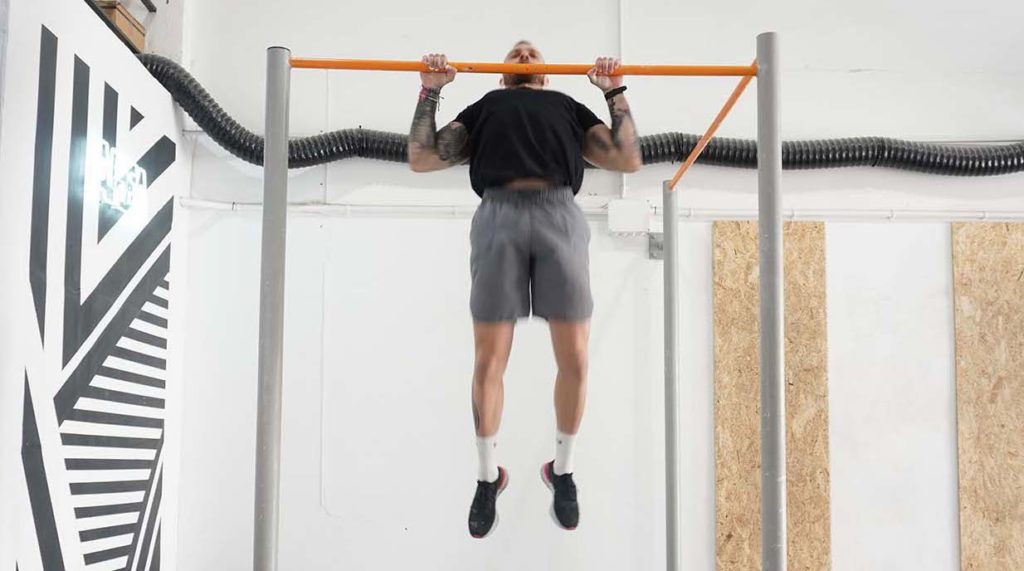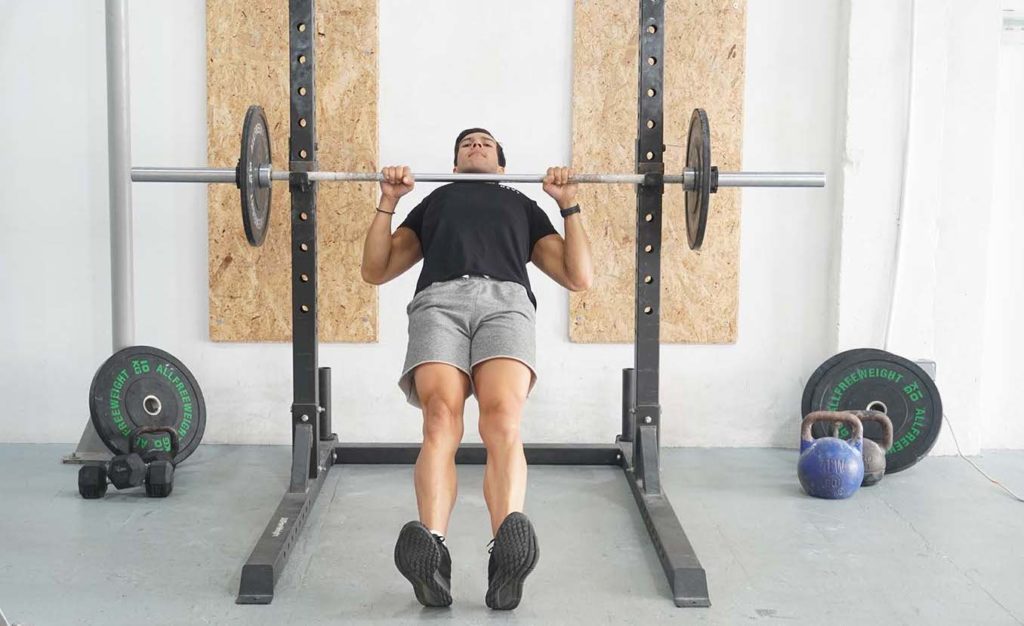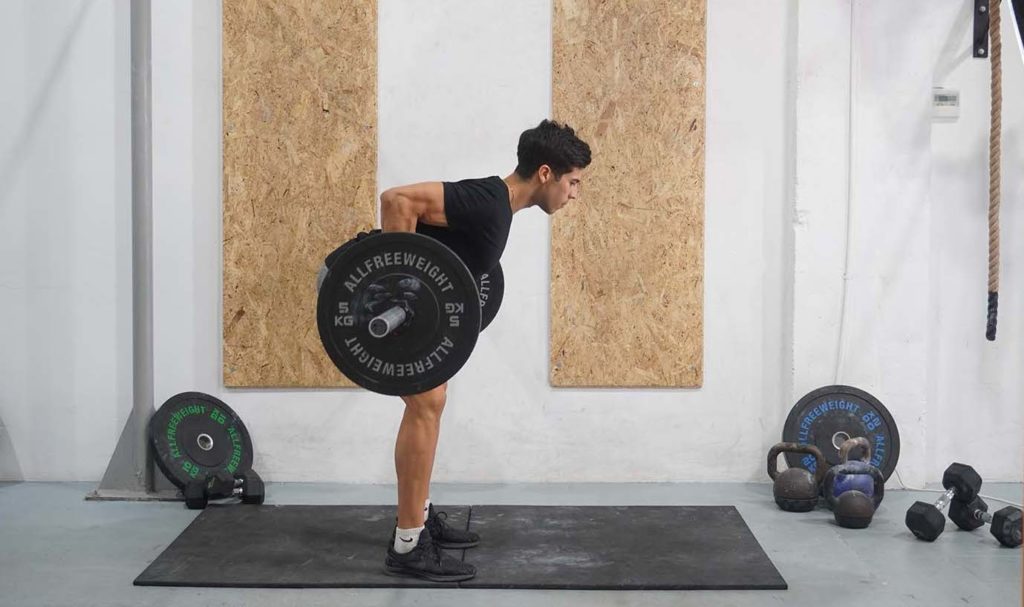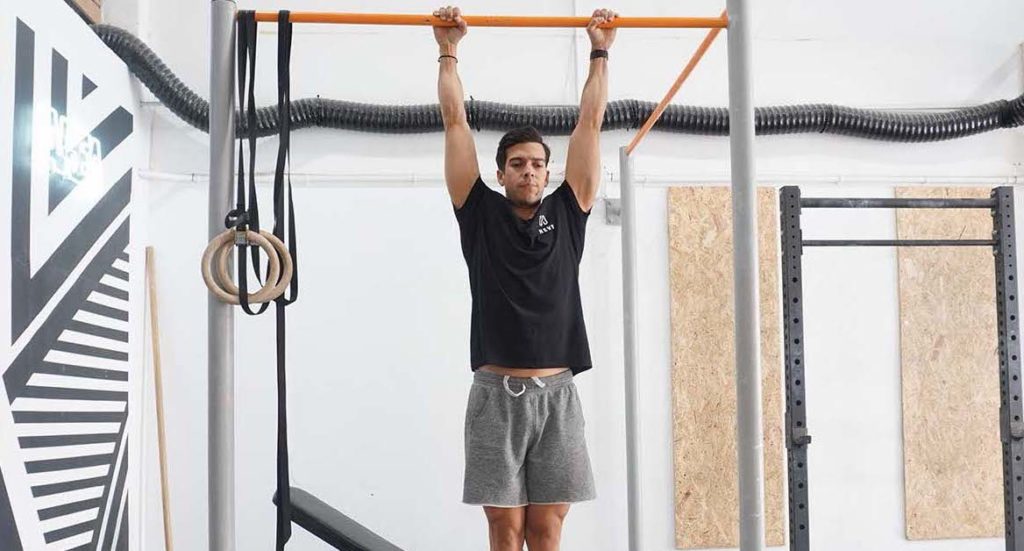What is a Kipping Pull Up?
Kipping pull-ups are one of the most controversial exercises. On the one hand, we have the people who love the movement, claiming that it strengthens the entire body, builds muscle mass, and makes us more athletic. But, on the other hand, we also have those who speak out against kipping pull-ups, saying that it is nothing but an ego lift with no real benefits that puts us at risk of injuries.
Unlike traditional pull-ups that rely on pure strength and body control, kipping pull-ups are about leveraging body swinging to create momentum and move your body up and down as you hold onto a horizontal bar. The movement became popular in CrossFit and has remained in that training style, having no influence on traditional strength training.
A huge reason for the controversy surrounding kipping pull-ups is that the proper way to perform the exercise means to leverage momentum and body swinging. Many people don’t consider the activity safe or particularly effective for developing true strength or muscle mass. Instead, some folks are much more interested in practicing the strict pull-up, which activates the correct muscles and forces you to maintain proper technique.
In traditional CrossFit training, kipping pull-ups are among the first movements in a workout because they are challenging to perform and recruit many muscles in the upper and lower body.
Level of Exercise: Intermediate
How to do a Kipping Pull Up
- Stand tall with your body directly underneath the pull-up bar. Keep your feet together.
- Raise your arms up and to the bar with your palms facing forward.
- Descend into a quarter squat by bending your knees as you take a breath.
- Immediately squat up and jump vertically, grabbing the pull-up bar.
- Raise your legs slightly and bring your buttocks back as you grab the bar.
- Use the momentum you’ve created by allowing your legs to swing back as your hips extend forward and your back moves into hyperextension.
- Continue leveraging the momentum you’ve created by allowing your legs to swing forward again, bringing your buttocks back, and having your back move into a neutral and slightly flexed position.
- Bend your elbows to pull yourself up as you move into the position described in step number seven. Your chin should be at the bar level, and your body should be straight and tilted back, similar to an inverted row.
- Lower yourself immediately while keeping your body in the same tilted position.
- Once your elbows are nearly extended, allow your legs to drop and swing back as your buttocks travel back and your spine moves into hyperextension again.
- Swing your legs forward again and use the momentum to pull yourself up for the second repetition.
- Keep moving up and down, leveraging the momentum your body creates to complete your kipping pull-up repetitions.
What muscles does the kipping pull up activate?
Unlike traditional pull-ups that emphasize a couple of major muscle groups, kipping pull-ups are a full-body, dynamic movement. As with strict pull-ups, the primary muscle group that works is the back complex, which consists of the lats, rhomboids, trapezius, erector spinae, infraspinatus, rear deltoids, and more (1). These muscles work together during spinal flexion and extension and create most of the force we need to pull ourselves up.
Our biceps also work during kipping pull-ups. Like regular pull-ups, their job is to create elbow flexion, which occurs as we build momentum and pull ourselves up (2). The biceps also work to control us on the way down as we complete a repetition. Similarly, the brachialis (a muscle that lies underneath the biceps) and brachioradialis (forearm muscle) assist the bicep with elbow flexion (3, 4).
The five hip flexor muscles also contribute during kipping pull-ups, and their job is to kick your legs forward, allowing you to build momentum for the movement. Your midsection musculature also contributes to the same motion by flexing isometrically and providing stability.
Our lower body musculature is also involved in kipping pull-ups. The quadriceps flex isometrically to maintain knee extension, and the glutes and hamstrings produce hip extension, which is essential for creating the necessary momentum for kipping pull-ups.
Tips on Proper Form When Performing the Kipping Pull Up
An important tip for safe and effective kipping pull-ups is to take the time and learn the two patterns involved in the movement: the open and closed body positions. The open body position occurs when you swing forward, your back is hyperextension, your shoulders are in front of the bar, your chest is out, and your feet are behind the bar. In contrast, the closed body position is the opposite: your back is somewhat flexed, shoulders are behind the bar, and feet are in front of the body.

Often, beginners start learning the two positions on the bar, which isn’t necessarily bad, but it can be overwhelming. Instead, a better approach is to understand the two positions on the floor and alternate by rolling your body.
The two exercises you must master are the superman and hollow hold. Supermans are the movement you perform by lying on the floor face down and extending your back as much as possible. Doing so lifts your chest and legs off the floor. Hollow holds are done by lying on your back, engaging your midsection, lifting your shoulder blades, and raising your feet while keeping your legs straight.
Performing the two movements and alternating between them is vital for strengthening the muscles in kipping pull-ups and becoming familiar with the movement patterns.
Once you’re confident with your technique on the floor, grab a pull-up bar and begin swinging your body in a controlled manner, performing the same two movement patterns but vertically. Start with smaller movements and gradually exaggerate the motions until you’re generating good speed and momentum.
Once you reach that point, it becomes a matter of including an elbow bend to the sequence to complete a full kipping pull-up.
Variations and Modifications of the Kipping Pull Up
1. Kipping
As discussed in the previous point, mastering the kipping pull-up occurs in stages. You should first learn the two body positions on the floor and practice them for a while. Then, move to the bar, and begin alternating between the open and closed body positions, first moving slightly, then increasing the range of motion.
Kipping refers to swinging back and forth to generate momentum without bending your elbows to pull yourself up. The movement is beneficial for beginners who are still learning the movement and don’t know how to generate momentum for kipping pull-ups.
2. Butterfly Pull Up
In contrast to kipping, the butterfly pull-up is the movement you start learning after kipping pull-ups. The exercise is more challenging and involves much more exaggerated body movements and the use of momentum to complete as many reps in as little time as possible. When seen from the side, the trainee’s body appears to be making concentric circles as it moves forward, back, up, and down.
3. Strict Pull Ups
Like kipping pull-ups, strict pull-ups aim to move your body up and down on a horizontal bar. But, instead of swinging your body strategically to create momentum and propel yourself up, you must keep your body as steady as possible. Instead, you have to rely on raw strength in your back and arms to pull yourself up.
Mistakes to Avoid
Losing Your Momentum
One of the most common errors with the kipping pull-up is losing your momentum. The mistake typically occurs because trainees generate some momentum, pull themselves up, and simply drop to the bottom position. Aside from placing tremendous stress on the shoulders, elbows, and wrists, doing so kills all the momentum you’ve generated, forcing you to start swinging from a dead hang. As a result, you waste a lot of time and energy creating new momentum for each repetition. To avoid the error, you should try to push yourself away from the pull-up bar as you reach the top while maintaining torso rigidity. Doing so will allow you to remain in an excellent position to continue swinging, which will keep the momentum going, resulting in seamless repetitions.
Rushing The Process
Another common error with the kipping pull-up is trying to learn the whole exercise too quickly. Trainees often see the kipping pull-up and immediately attempt to replicate it on a horizontal bar. Doing so is a mistake because you don’t have the necessary skills to create momentum, and you’re more likely to make a mistake that can lead to an injury. Instead, you should start learning the movement from a lying position and gradually progress to a pull-up bar.
Hyperextending Your Back too Much
The third common error to watch out for is excessively moving your legs and hyperextending your back. Often, beginners think that swinging their legs more would result in greater momentum, but that isn’t necessarily the case. Synchronizing your movements and pulling yourself up at the right time is much more critical for effective kipping pull-ups. Avoid the error by limiting body swinging and keeping your knees extended during each set.
Similar Exercises to the Kipping Pull-Up
Inverted Row

Inverted rows are an effective bodyweight exercise that strengthens your back, biceps, midsection, and grip (5). The movement is beneficial for your kipping pull-up performance because it leads to core stability and allows you to practice the closed body position. As a result, you’re better able to generate momentum and do kipping pull-ups more safely.
Bent Over Row (Barbell)

Bent over rows are another fantastic movement that strengthens your back, biceps, grip, and midsection. The objective is to grab a barbell, lean forward, and pull the weight to your upper stomach. Pause at the top and lower the barbell by extending your elbows. Repeat the sequence as many times as possible.
Dead Hang

Dead hangs are a functional exercise that develops your grip and forearms. The activity is also beneficial for your arms, shoulders, back, and midsection. Performing dead hangs is excellent for improving your ability to hang from a pull-up bar, leading to superior performance on kipping pull-ups.

